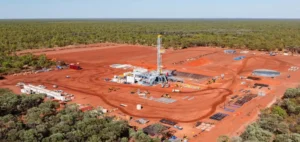Norwegian gas exports to Northwest Europe remained strong in July.
According to S&P Global Commodity Insights, deliveries reached 10.02 billion cubic meters (Bcm), up 9% on the previous month and 12% year-on-year.
These volumes remained at the top end of the five-year range for the second consecutive month.
Gas flows were mainly impacted by unplanned maintenance work on the Visund field, which began in June and continued into July.
Despite this, robust supplies kept EU storage sites well filled.
As of August 3, inventories stood at 85.7% of capacity, according to data from Gas Infrastructure Europe.
Planned maintenance and market concerns
The most intense maintenance period on the Norwegian Continental Shelf (NCS) this year is scheduled between the end of August and the end of September.
During this period, up to half of Norway’s production capacity could be taken offline, leading to fluctuations in gas flows.
The market is concerned about the possibility of overruns on the work planned for September.
European gas prices remain high.
Platts, a division of Commodity Insights, assessed the one-month Dutch TTF gas price at €36.78/MWh on August 2.
Torgrim Reitan, CFO of Equinor, stressed in July, after the release of the company’s second-quarter results, that the market remains “fragile”.
Reitan mentioned that Asian gas demand trends and the fate of Russian gas flows to Europe via Ukraine are key factors to watch for market supply-demand balances in 2024.
Diversification of gas flows
Traditionally, Norwegian gas flows via pipeline to terminals in the UK, Belgium, France, Germany and the Netherlands.
Since November 2022, gas has also entered the Danish network at Nybro, as part of the 10 Bcm/year Baltic Pipe project to Poland.
In July, 884 million cubic meters were delivered to Nybro, the highest monthly flow ever.
Flows via the Baltic Pipe divert Norwegian gas exports from other terminals, notably the Netherlands and France.
In addition to pipeline exports, Norway also produces gas as feedstock for the Hammerfest LNG export facility and for domestic use.
Production outlook and future development
According to the Norwegian Offshore Directorate (NOD), 2022 is considered the peak year for gas production in Norway.
In its annual outlook published in January, the NOD, formerly known as the Norwegian Petroleum Directorate, indicated that production in 2023 would total 116 Bcm, down from the record 122.5 Bcm in 2022.
Production in 2024 is expected to reach around 119.9 Bcm.
Companies and industry analysts continue to closely monitor regulatory developments and market conditions.
Supply and investment strategies will need to adapt to changing dynamics to maximize opportunities and mitigate risks.
Regulations play a crucial role, both as a challenge and as a catalyst for innovation in the energy sector.





















